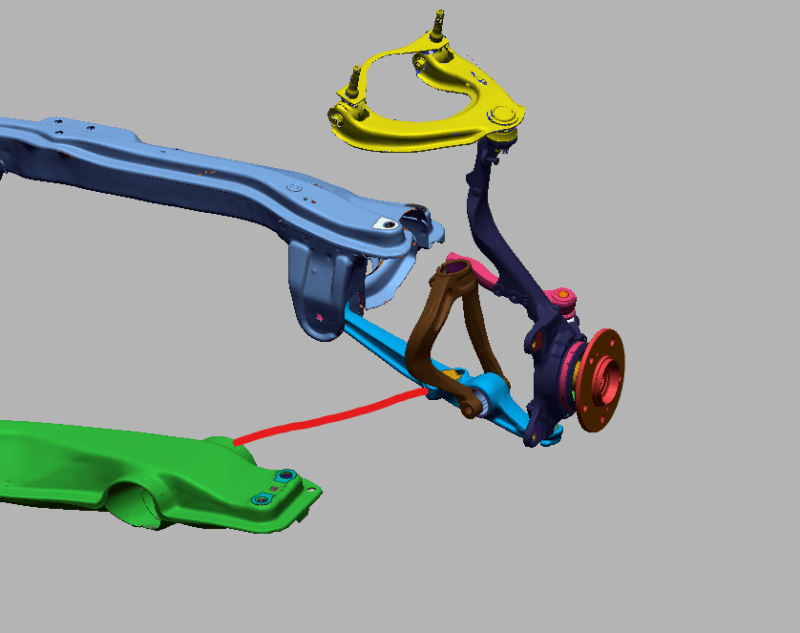roller_delawer
Automotive
Hello everyone,
I have recently started a project to redesign the suspension elements of an existing road car and I need some advice from people more experienced in suspension parts.
The goal of the project is not to re-design the whole suspension scheme and geometry, but only the individual elements, in order to reduce weight and also (why not?) to get a more "engineering p0rn" / restomod flavour for the car.
We are at the initial stages of the process, defining the concept of each component and producing the first CAD models. At this point I need to start looking at the materials and manufacturing process to draw the CAD models accordingly. All we know so far is that we want to go for CNC machined components (for the looks) but I am not sure what would be the right material choice as a starting point.
At this point is probably worth mentioning I am an experienced automotive engineer, but I have always worked with plastic/composite parts but never with metals, hence why I understand what I am doing, but need some guidance for material selection.
I reckon aluminium is probably the way to go, but I know there are several grades with highly different characteristics. Titanium has been mentioned in our internal conversations but from what I've read, it doesn't beat aluminium for this application except maybe in the "exclusivity factor". I guess steel it's probably not worth if parts will be CNC'd?
I will be very glad to hear some material advice and sources of information as well as what other considerations beyond the obvious CAE/weight/cost I should have for this parts.
Thank you very much for any possible help!
Osdecar
I have recently started a project to redesign the suspension elements of an existing road car and I need some advice from people more experienced in suspension parts.
The goal of the project is not to re-design the whole suspension scheme and geometry, but only the individual elements, in order to reduce weight and also (why not?) to get a more "engineering p0rn" / restomod flavour for the car.
We are at the initial stages of the process, defining the concept of each component and producing the first CAD models. At this point I need to start looking at the materials and manufacturing process to draw the CAD models accordingly. All we know so far is that we want to go for CNC machined components (for the looks) but I am not sure what would be the right material choice as a starting point.
At this point is probably worth mentioning I am an experienced automotive engineer, but I have always worked with plastic/composite parts but never with metals, hence why I understand what I am doing, but need some guidance for material selection.
I reckon aluminium is probably the way to go, but I know there are several grades with highly different characteristics. Titanium has been mentioned in our internal conversations but from what I've read, it doesn't beat aluminium for this application except maybe in the "exclusivity factor". I guess steel it's probably not worth if parts will be CNC'd?
I will be very glad to hear some material advice and sources of information as well as what other considerations beyond the obvious CAE/weight/cost I should have for this parts.
Thank you very much for any possible help!
Osdecar

